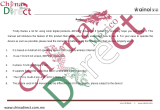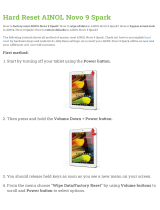
i
Contents
Chapter 1. Getting to know your computer..................................................................................... 1
Top view
........................................................................................................................................................ 1
Left-side view
................................................................................................................................................ 6
Right-side view
.............................................................................................................................................. 9
Front view
.................................................................................................................................................... 11
Bottom view
................................................................................................................................................. 12
Chapter 2. Starting to use Windows 10 ......................................................................................... 14
Configuring the operating system for the first time
.............................................................................. 14
Operating system interface
........................................................................................................................ 14
Putting the computer to sleep or shutting it down
................................................................................ 16
Task and desktop management
................................................................................................................ 18
Connecting to a wireless network
............................................................................................................ 19
Get Started app
............................................................................................................................................ 19
Touch screen operation (on select models)
............................................................................................. 20
Chapter 3. Lenovo OneKey Recovery System.............................................................................. 23
Chapter 4. Troubleshooting............................................................................................................ 24
Frequently asked questions
....................................................................................................................... 24
Troubleshooting
.......................................................................................................................................... 26
Trademarks ...................................................................................................................................... 30





















